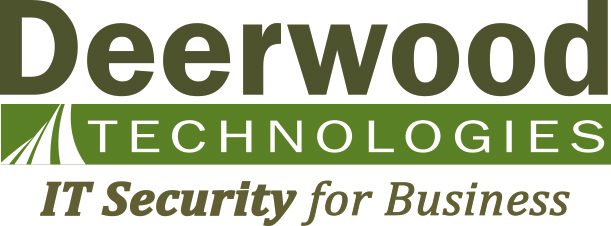In today’s digital landscape, data security is more critical than ever for businesses of all sizes. The more informed you are, the better you’re able to protect your data and the data of your clients. We will explore the crucial role of Data Loss Prevention (DLP) in protecting sensitive information from both accidental and malicious leaks, discuss the growing threat of data breaches and their impact on businesses, and share best practices for implementing DLP.
Understanding Data Loss Prevention
Data Loss Prevention (DLP) is a set of tools, strategies, and policies aimed at identifying, monitoring, and protecting sensitive data within an organization. It helps prevent unauthorized access, use, and transmission of confidential information, ensuring that your business’ critical data remains secure from both internal and external threats.
Different types of data leaks
Data leaks can occur in 2 main forms:
Accidental leaks
These occur when employees unintentionally share or expose sensitive information, such as through misaddressed emails, mistakenly uploaded files to public cloud storage, or mishandled physical documents.
Malicious leaks
Deliberate attempts by insiders or outsiders to steal, manipulate, or disclose confidential data for personal gain or to cause harm to the organization. Examples include disgruntled employees sharing trade secrets, hackers breaching systems to access customer data, or corporate espionage.
Common channels for data leakage
Sensitive data can be leaked through several channels, making it crucial to have a comprehensive DLP strategy in place. Some of the most common channels are:
Unauthorized sharing or accidental sending of sensitive data via email is a common way for data to be leaked. Implementing DLP policies that monitor email content and attachments can help identify and prevent such incidents.
Web
Data can be exposed through insecure websites or unauthorized cloud storage services. DLP solutions can monitor and control access to these services, ensuring that sensitive data is not shared inappropriately.
USB drives and other portable storage devices
The use of unsecured USB drives or portable storage devices can lead to data leakage if they are lost, stolen, or accessed by unauthorized individuals. Implementing policies that restrict or control the use of these devices can help mitigate this risk.
Cloud storage
While cloud storage offers numerous benefits, it can also present data leakage risks if not properly secured. Ensuring that cloud storage providers have robust security measures in place and implementing access controls can help protect your data from unauthorized access or sharing.
By understanding the different types of data leaks and the channels through which they can occur, businesses can better develop and implement comprehensive DLP strategies to safeguard their sensitive information.
The Growing Threat of Data Breaches
Data breaches have become a widespread concern in recent years, with organizations across industries falling victim to cyberattacks and insider threats. According to the Verizon 2021 Data Breach Investigations Report, there were over 29,000 security incidents and 5,258 confirmed data breaches in the analyzed year. Furthermore, the report revealed that 44% of threat actors related to breaches in small SMBs were internal employees, highlighting the need for businesses to address both external and internal threats.
The impact of data breaches on businesses
The consequences of a data breach can be severe for businesses, including:
Financial losses
Data breaches can lead to direct costs, such as fines, legal fees, and remediation expenses. Moreover, businesses may experience indirect costs, such as lost customers and decreased sales due to reputational damage.
Reputational damage
A data breach can severely tarnish a company’s image, leading to a loss of trust among customers, partners, and stakeholders. Restoring this trust can be time-consuming and costly.
Legal and regulatory penalties
Businesses that fail to protect sensitive information may face penalties and sanctions from regulatory bodies, such as the GDPR in the European Union or the CCPA in California.
Operational disruption
Data breaches can cause significant disruption to a business’ operations, including downtime, lost productivity, and the need to allocate resources to address the breach.
Implementing Data Loss Prevention With Deerwood Technologies
Deerwood Technologies’ Data Loss Prevention Managed Service offers a comprehensive solution for businesses looking to secure their sensitive data against leaks and breaches. The service leverages next-generation technologies and expertise to provide unmatched protection against data leakage risks, ensuring that your organization remains compliant and secure.
Benefits of using Deerwood Technologies’ DLP solutions
Some of the key advantages of implementing Deerwood Technologies’ DLP solutions include:
Customized policies
Deerwood Technologies develops DLP policies tailored to your business’ unique needs, ensuring that the most common causes of data leaks are addressed effectively.
24/7/365 coverage
Deerwood Technologies’ DLP Managed Service provides continuous protection across network channels and peripheral devices, ensuring that your sensitive data is safeguarded at all times.
Behavior-based approach
Deerwood Technologies uses a behavior-based approach to create DLP policies, allowing for more accurate identification of potential data leakage risks.
Easy-to-understand graphical presentation
Deerwood Technologies presents DLP policies in a clear, graphical format, making it easier for business leaders to validate and understand the proposed security measures.
Best Practices for Data Loss Prevention
Implementing a comprehensive DLP strategy requires a combination of technical solutions and organizational best practices to ensure optimal protection of your sensitive data. Here are some key best practices to consider:
Employee training and awareness
- Regular training: Provide ongoing education for employees on data protection, security policies, and the potential consequences of data breaches. Ensure that they understand their responsibilities in safeguarding sensitive information.
- Security awareness campaigns: Implement awareness campaigns to keep employees informed about the latest threats, safe online practices, and your organization’s DLP policies.
- Reporting mechanisms: Encourage employees to report any suspicious activities or incidents that could lead to data leakage and provide a clear process for doing so.
Regular audits and updates of DLP policies
- Periodic reviews: Conduct regular reviews of your DLP policies to ensure that they remain effective in addressing the current threat landscape and your organization’s evolving needs.
- Incorporate feedback: Gather input from stakeholders, such as IT teams, business leads, and employees, to identify potential gaps in your DLP policies and make necessary adjustments.
- Monitor compliance: Continuously monitor compliance with your DLP policies and promptly address any violations or noncompliant behavior.
Multilayered security approach
- Encryption: Use encryption to protect sensitive data, both at rest and in transit, to minimize the risk of unauthorized access or interception.
- Access control: Implement strong access controls, including role-based access, multifactor authentication, and the principle of least privilege, to ensure that only authorized individuals have access to sensitive data.
- Network security: Deploy robust network security measures, such as firewalls, intrusion detection systems, and secure remote access solutions, to protect your organization’s network from external threats.
By following these best practices and leveraging Deerwood Technologies’ Advanced DLP Managed Service, businesses can create a robust and effective data loss prevention strategy that minimizes the risk of data breaches and keeps sensitive information secure.
Don’t leave the security of your sensitive data to chance. Contact Deerwood Technologies today to schedule an IT risk assessment and discover how our expertise and advanced solutions can help safeguard your business against data loss. Let us help you build a strong foundation for data security, allowing you to focus on what matters most: growing your business and serving your customers with

